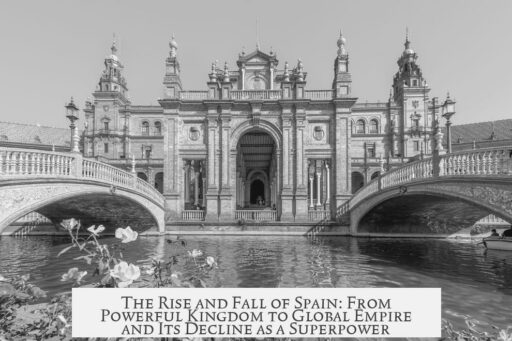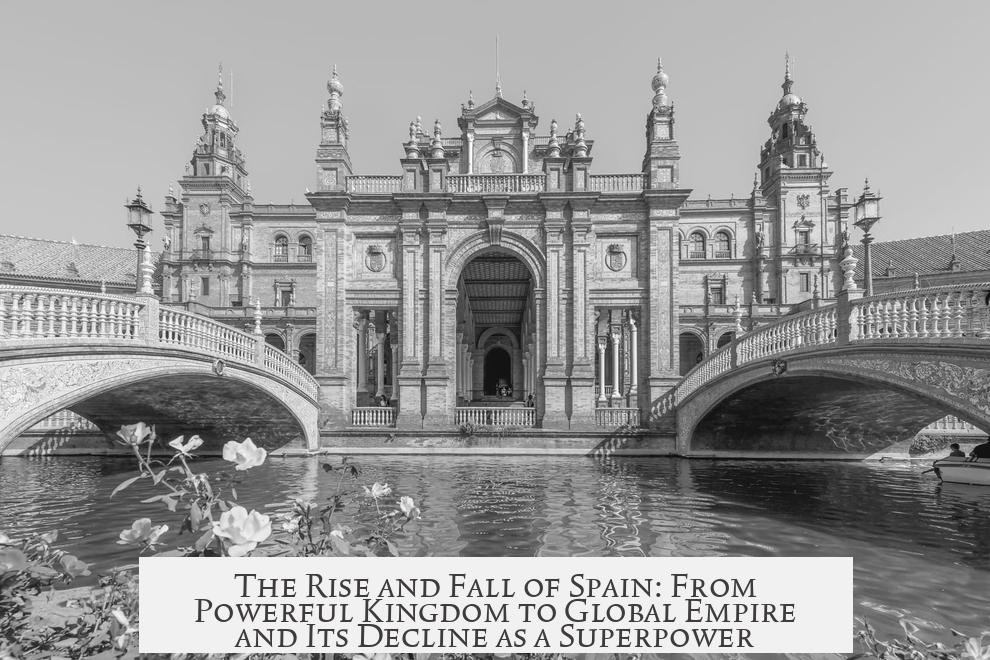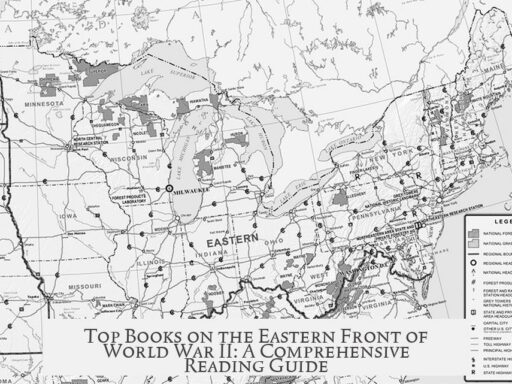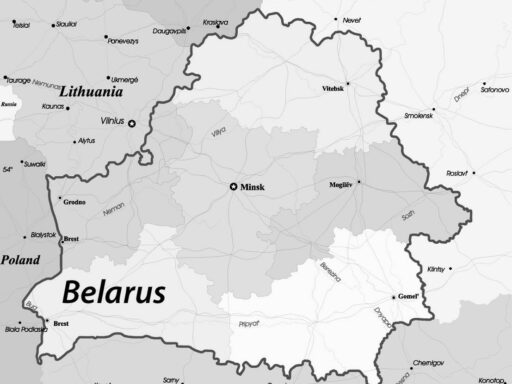Spain declined from a powerful kingdom and global empire to a non-superpower due to a mix of economic missteps, internal structural issues, military overstretch, rivalries, and colonial losses. The empire struggled with economic dependency on imported goods and silver influx, political fragmentation, and inability to protect or profit from its vast territories. By the 19th century, Spain’s global dominance had faded significantly.
Spain’s economic decline began in the 17th century. Despite its wealth from American silver, Spain failed to develop a strong domestic manufacturing sector. Most goods, especially textiles, were imported from Britain, Italy, and other European countries. The influx of silver encouraged Spain to become a buyer rather than a producer, which weakened its industrial base.
The Treaty of Tordesillas (1494) also harmed Spain economically by limiting colonial ventures in Africa and the Atlantic slave trade. Spain had to rely on contracts (asientos) granted to Portuguese, Dutch, and British companies to import slaves, losing economic benefits others gained through direct colonial and slave trade companies. Notably, Spanish entities did not dominate lucrative slaving enterprises like the Royal African Company.
Spain’s vast empire became difficult to defend and manage. European rivals targeted Spanish colonies, while piracy flourished, especially from British, Dutch, and French freebooters. Spain’s limited naval and military presence could not enforce trade monopolies. This allowed contraband trade to thrive, cutting into Spanish revenues and further weakening Spain’s economic position.
Spain’s rigid protectionist policies failed against the realities of colonial trade. Smuggling of textiles, guns, and tools from other European powers to Spanish America was rampant. Spain’s inability to supply the colonies with manufactured goods made it an open market for competitors. These failures aggravated Spain’s economic downturn.
Internally, Spain faced structural obstacles. The nobility (hidalgos) remained tax-exempt and tied to traditional privileges, often unwilling to engage in commerce or industry. Although regions like Catalonia developed significant textile industries by the 18th century, overall industrialization lagged behind other European powers. The agricultural system also hindered urban migration and industrial workforce growth in many areas.
Religious factors, such as the influence of the Inquisition and the Counter-Reformation, are sometimes blamed for Spain’s decline. However, the relationship between religion and economic development is complex and not solely determinative. Political fragmentation was more directly impactful, with regions like Catalonia, Aragon, and Valencia maintaining legal autonomy until 1715. Weak rulers allowed provinces to ignore central government directives, undermining national unity.
Several costly wars further strained Spain’s resources. Conflict with France, England, the Dutch Republic, and the Ottoman Empire sapped finances and military strength throughout the 16th and 17th centuries. The prolonged Thirty Years War ended in defeat and economic bankruptcy. Spain also lost Portugal and its colonies after the 1640 Portuguese rebellion.
The Napoleonic Wars delivered a decisive blow. French occupation from 1808 to 1814 weakened Spanish control. This turmoil, combined with revolutionary ideas spreading from France, triggered independence movements in Latin America. Between 1808 and 1825, Spain lost most of its continental empire. Post-independence, only Cuba, some Caribbean islands, the Philippines, and a few outposts remained.
Despite these declines, Spain maintained a relatively distinct colonial policy. Unlike other empires, Spain granted same legal rights to indigenous peoples and invested in institutions such as hospitals and universities in the Americas. This approach differed from other colonial models and had complex social effects.
| Key Factors Contributing to Spain’s Decline | Details |
|---|---|
| Economic | Dependency on imported goods; failure to industrialize; reliance on American silver; exclusion from slave trade profits; contraband trade losses |
| Political | Internal regional autonomy and tensions; tax-exempt impoverished nobility; weak central governance; slow industrialization |
| Military and Geopolitical | Costly wars with European rivals; military overstretch defending empire; piracy and trade challenges; loss of Portugal |
| Colonial | Napoleonic Wars and French occupation; independence of Latin American colonies; major loss of overseas territories |
| Social/Cultural | Distinct colonial policies with indigenous rights; internal civil conflicts later affecting national strength |
- Spain’s decline reflects combined economic, political, military, and colonial failures over centuries.
- Economic dependency on silver and lack of domestic production left Spain vulnerable.
- Political fragmentation and social structures hindered modernization.
- Military overstretch and continuous wars drained resources and weakened control.
- Loss of colonies following Napoleonic Wars ended Spain’s global empire status.
What Happened to Spain? Once a Powerful Kingdom, Then a Global Empire, But Now Not a Superpower?
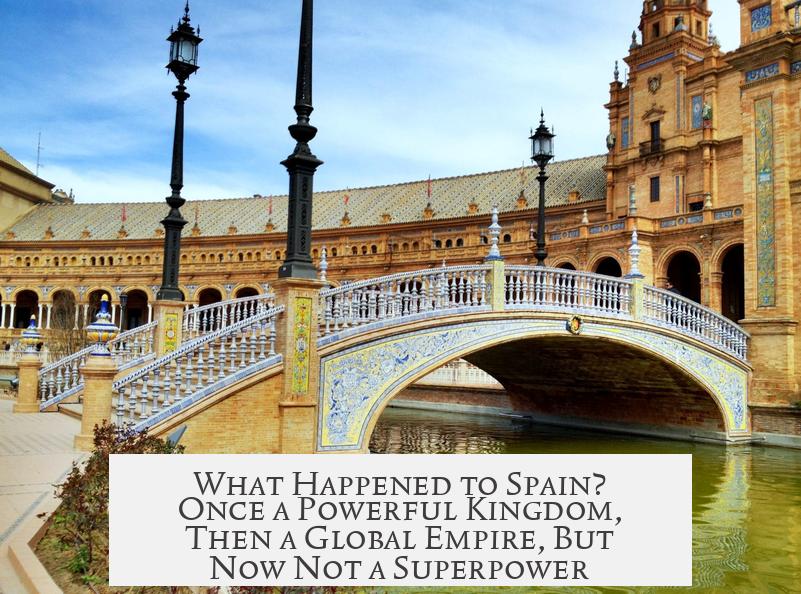
Spain’s dramatic fall from a global superpower to a struggling nation results from a complex mix of economic missteps, political fractures, military challenges, and colonial upheavals. Let’s unravel this fascinating story step-by-step and see why the once-mighty Spanish empire no longer holds the global clout it once did.
So, what happened to Spain? Why does a nation that once controlled vast territories across the Americas, parts of Europe, Africa, and Asia, no longer dominate the world stage? We’ll explore history, economics, politics, and culture to answer these questions with a dash of storytelling and some hard facts.
The Economic Decline: When Silver Turned Spain Into a Buyer
The 17th century marks the beginning of Spain’s economic slide. One might expect that with all the silver flooding in from the Americas, Spain would become fabulously wealthy—and, well, it did— but not in the way that fosters lasting power. Instead of investing in building a robust manufacturing base, Spain turned into a mere buyer of goods.
Imagine a country awash in cash but with empty factories. Spain’s dreams for a native manufacturing industry, for instance in textiles, never took off. The textile industry in Spain declined as imports from Britain, Northern Italy, and other European countries surged. Spanish colonies needed textiles, but most came from abroad, funneling wealth out of Spain rather than building an industrial foundation within.
So, rather than becoming a producer, Spain became a consumer—an empire fueled not by industrial innovation but by spending silver on foreign goods. This economic mismanagement sowed the seeds of decline.
The Treaty of Tordesillas: When Geography and Politics Played a Role
Most people know the Treaty of Tordesillas (1494) divided the newly discovered lands outside Europe between Spain and Portugal. What many miss is the economic consequence: by this treaty, Spain was effectively locked out of African colonization and the lucrative slave trade.
That meant Spain couldn’t develop its own slave-trading companies. Instead, it became a buyer of slaves from Portugal, the Dutch, and the British, who held contracts called asientos to sell slaves on Spanish territories.
Oddly enough, some of the biggest slave enterprises, like the Royal African Company or the South Sea Company, were never Spanish. This exclusion limited Spain’s influence in the expanding global economy and wealth networks, while rivals seized these opportunities.
The Struggle to Defend a Sprawling Empire: Military Overstretch and Piracy
Spain’s extensive empire was its glory and its burden. With territories stretching from the Americas to Asia, defending and managing these outposts was a monumental task. Spain could neither maintain exclusive trade monopolies nor fully protect its holdings.
The empire was a juicy target. Nations like England, France, and the Netherlands saw Spain’s wealth and weaknesses clearly. Piracy flourished—especially British and Dutch buccaneers thriving off Spanish possessions in the Caribbean.
Even though Spain had licensed corsairs, it lacked the naval power to stop pirates or contraband trade effectively. This contributed heavily to the empire’s bleeding treasure and influence, making Spanish colonies a playground for others rather than a fortress of power.
Rigid Economic Policies: Spain’s Trade Monopoly Failure
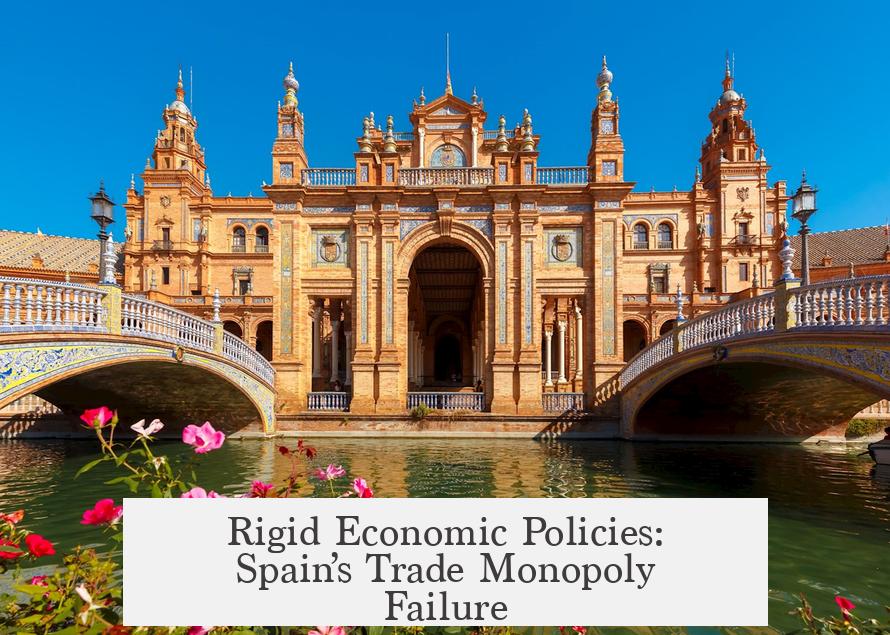
Spain tried to enforce a tough, protectionist monopoly over its colonial trade. However, this shattered on the ground as contraband goods poured into Spanish American ports. The Spanish economy failed to meet the colonial demand for textiles, guns, and tools, so foreign goods flooded in illegally.
Rather than controlling the colonial market, Spain’s monopoly policies widened the black-market economy and empowered rival European powers economically. This failure worsened Spain’s economic position instead of strengthening it.
Structural Issues at Home: Nobility, Agriculture, and Industrialization
Internally, Spain faced structural obstacles to growth. The influx of silver led to complacency, discouraging manufacturing development. The nobility, especially the lower gentry known as the hidalgos, were often poor due to inheritance practices splitting estates thin and inflation reducing wealth.
And yet, these nobles were tax-exempt and preferred in government and military jobs, giving them no incentive to chase commerce or industry. This contrasted with other European countries where the declining gentry adapted to new economic roles.
On the agricultural front, Spain’s peasants held small plots in northern and central regions, unlike Britain where enclosures pushed peasants off the land, fuelling urban growth and industrial labor. Spain’s slower urban migration limited industrial momentum.
Nonetheless, Catalonia emerged as a textile hub in the 18th century, with Andalusia and the Basque Country industrializing later. Sadly, this came after Spain had lost much of its colonial might.
Religion and Politics: The Impact of the Inquisition and Regional Tensions
Historians debate whether the Inquisition and Counter-Reformation hampered Spain’s economic and scientific progress. Some argue religious rigidity stifled innovation and entrepreneurship.
In politics, regional tensions complicated national unity. While Spain was formally unified in 1479, regions like Catalonia and Valencia maintained autonomy into the 18th century. Provinces had their own assemblies and tax systems until centralized reforms in 1715.
Strong monarchs could manage this patchwork, but weak rulers, like Charles II, faced provincial defiance. Nineteenth-century regionalism sowed seeds for Spain’s civil wars and chronic political instability, further draining resources and focus.
Wars and Rivalries: Draining Spain’s Treasure and Strength
Spain’s geopolitical position attracted many enemies—France, England, the Dutch Republic, and the Ottoman Empire. A series of costly wars, including the devastating Thirty Years’ War (1618–1648), bled Spanish finances dry.
Spain lost Portugal and its colonies after a 1640 revolt, further shrinking its global reach and revenue streams. Defending vast territories from Ottoman threats and Barbary pirates added to the strain.
Spain’s military overstretch combined with constant warfare undermined its ability to remain a hegemonic force. Its treasury faced multiple bankruptcies, weakening governance and economic resilience.
The Napoleonic Wars and the Final Blow to Empire
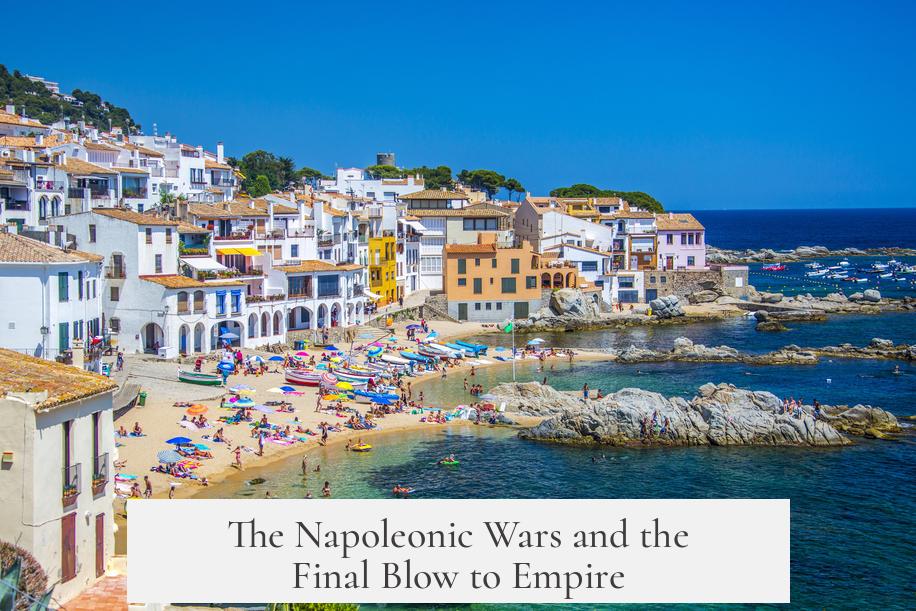
The 19th century’s early decades brought the Napoleonic Wars and the French occupation of Spain (1808–1814), devastating the nation. The chaos and exposure to revolutionary ideas fueled independence movements in Spain’s Latin American colonies.
Between 1808 and 1825, the vast majority of Spain’s American territories won independence, leaving only Cuba, some Caribbean islands, the Philippines, and small outposts outside Europe.
This loss gutted Spain’s imperial wealth and global standing. The empire that once spanned oceans shrank to a shadow of its former self.
Cultural Uniqueness: Spain’s Colonial Societies
Despite the decline, Spain’s colonial management offered some notable distinctions. Spanish colonial law granted natives rights similar to Spaniards, and institutions like hospitals and universities were established for indigenous populations. This differed from other imperial powers and helped maintain social stability in colonies.
As one traveler observed, Spain treated natives more like fellow countrymen, fostering mixed families and social peace. Yet, internal conflicts and economic policies overshadowed these social achievements in the long run.
Summary: The Fall of a Superpower
- Economic mismanagement — silver wealth made Spain a consumer, not a producer. Failure to develop industry and exclusion from key trades limited growth.
- Political fragmentation — weak central control and regional autonomy hindered cohesive national policy and stability.
- Military overstretch — draining wars, many enemies, and vast territories sapped resources and capacity to protect the empire.
- Loss of colonies — Napoleonic Wars catalyzed independence movements that drastically shrank Spain’s empire.
- Unique social policies — Spain managed colonial societies with a degree of inclusion and rights for natives.
This complex web pulled Spain from soaring heights to a nation wrestling with decline. The empire’s glory days melted away under economic stagnation, political struggle, military setbacks, and colonial losses.
What Lessons Can We Draw?
Spain’s story is a cautionary tale about reliance on resource wealth without industrial innovation, the perils of political fragmentation, and the dangers of military overreach. It shows how powerful empires can falter without adaptive economies and strong, unified governance.
Could Spain have maintained superpower status? Perhaps with investment in manufacturing, more flexible trade policies, and stronger governance, history might have turned out differently. But as it stands, Spain offers a rich case study on how complex historical and structural factors can change the fate of nations.
So next time someone asks, “What happened to Spain?” you can confidently say: A mix of economic shortsightedness, political discord, military burdens, and the irreversible collapse of empire brought Spain down from the dizzy heights of global power — but not without leaving a remarkable legacy.
